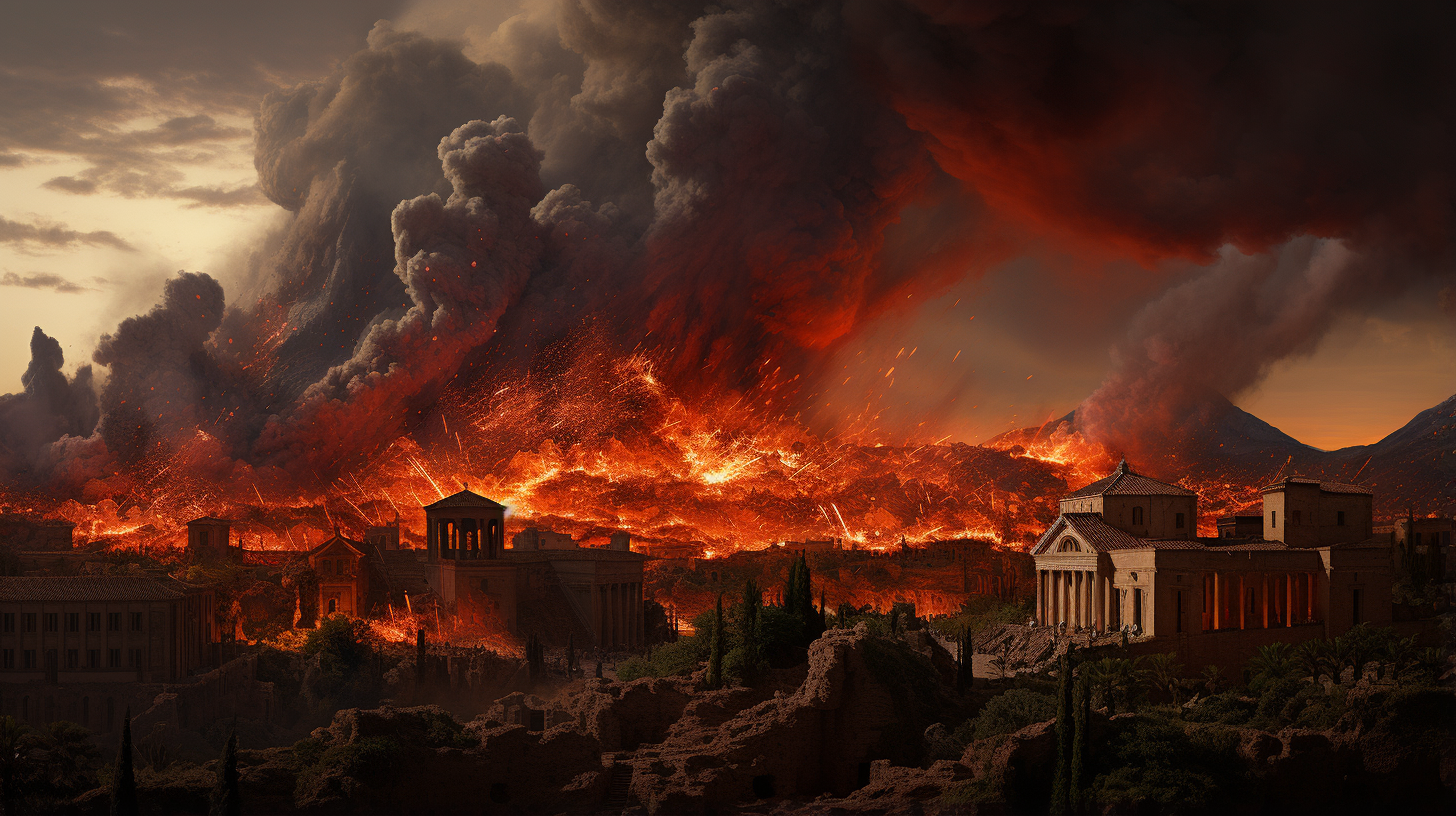Transport yourself to Pompeii, circa 79 AD in Italy. A tranquil late summer day takes a sudden turn as Mount Vesuvius erupts catastrophically, enveloping the ancient Roman city in turmoil.
Within moments, Pompeii and its inhabitants are covered in a blanket of scorching gas and molten lava, transforming a bustling urban center into a poignant time capsule.
Nearly two millennia later, the remnants of Pompeii continue to captivate both archaeologists and visitors. These excavations offer a glimpse into the everyday lives of a bygone era. Yet, amid the ash-laden ruins, a remarkable discovery emerges as the star – the Villa dei Papiri.
Back in 1750, workers digging a well inadvertently stumble upon the Villa dei Papiri, an opulent Roman estate near Pompeii. It wasn’t solely the villa’s grand marble and bronze sculptures that intrigued them; it was the unearthing of a hidden library containing over 1,800 papyrus scrolls.
These scrolls provide a rare window into the thoughts and writings of individuals from an era when togas were fashionable and chariot races were a common pastime.
Mistaken initially for logs or branches due to their rolled-up and charred state, these artifacts were eventually identified as ancient papyrus documents.

The library of Villa dei Papiri stands as a rare vestige from antiquity, preserving scrolls ranging from the 3rd century BC to the 1st century AD. Among these writings are philosophical treatises, snippets of poetry, literary critiques, and historical perspectives. Some scrolls, however, remain tightly wound and carbonized, awaiting thorough examination.
Years of delicate handling have kept many scrolls beyond reach, yet a glimmer of hope shines through modern innovation. Researchers at the University of Kentucky have developed an inventive technique known as “virtual unwrapping.”
This cutting-edge method utilizes sophisticated X-ray machinery to scan the scrolls without causing harm.
The process involves capturing a comprehensive view of the object as it rotates in the path of the X-ray beam. Subsequent image processing allows for the reconstruction of the scrolls, generating a 3D model for deciphering the content.
Thus far, the team has successfully scanned two intact scrolls and numerous fragments, with plans for further exploration in the future.
The potential revelations concealed within these 2,000-year-old scrolls are tantalizing. One compelling theory proposes that they may contain copies of letters attributed to the apostle Paul, a significant figure in early Christianity.
Given the timeframe of the Villa dei Papiri’s entombment, the presence of these correspondences amidst its treasures appears plausible.
Uncovering such ancient Christian writings would be groundbreaking, offering insight into the formative days of the faith. It underscores how technology can illuminate historical enigmas, providing a forensic window into the past that consistently leaves us in awe.
Watch the Video:
By delving deeper into Pompeii’s volcanic archeological archives, we reflect on the hidden treasures that may lie beneath the layers of history, awaiting discovery through the patient hands of archaeologists and modern scientific instruments. The tale of Pompeii transcends calamity; it speaks to humanity’s enduring quest to unearth the past and understand our origins.
